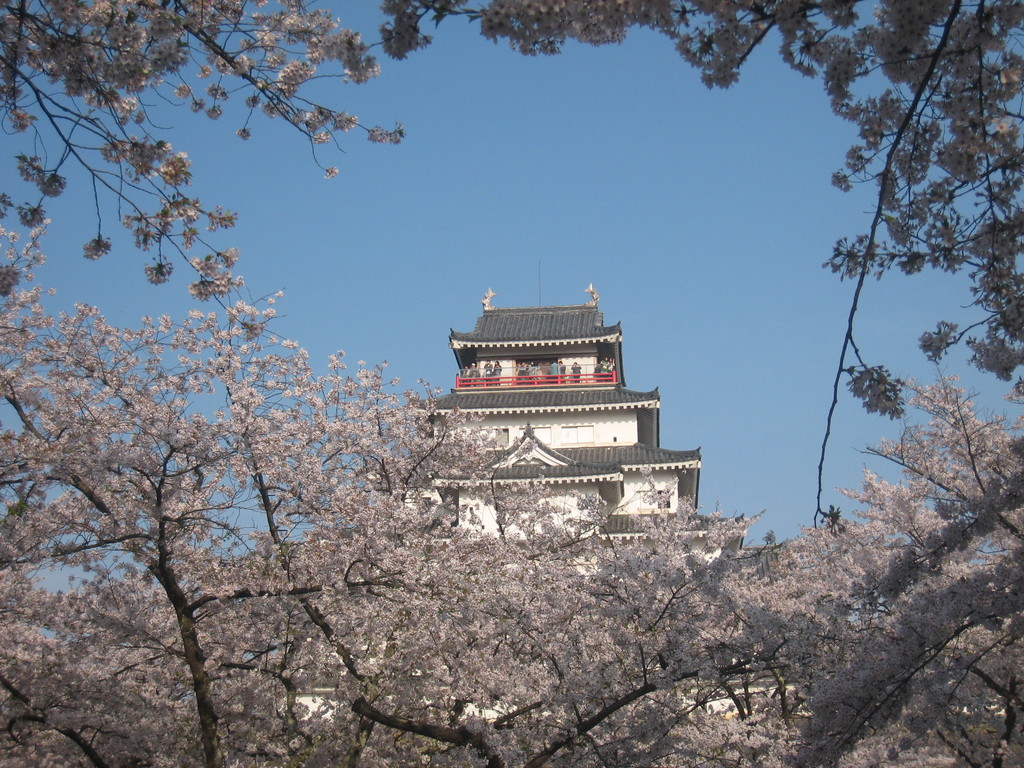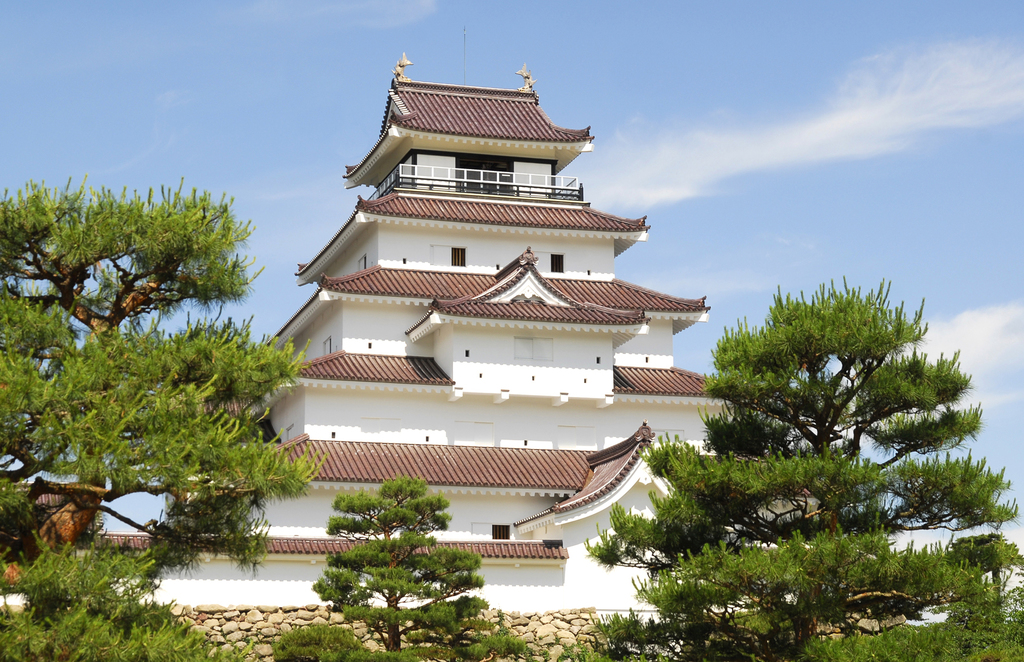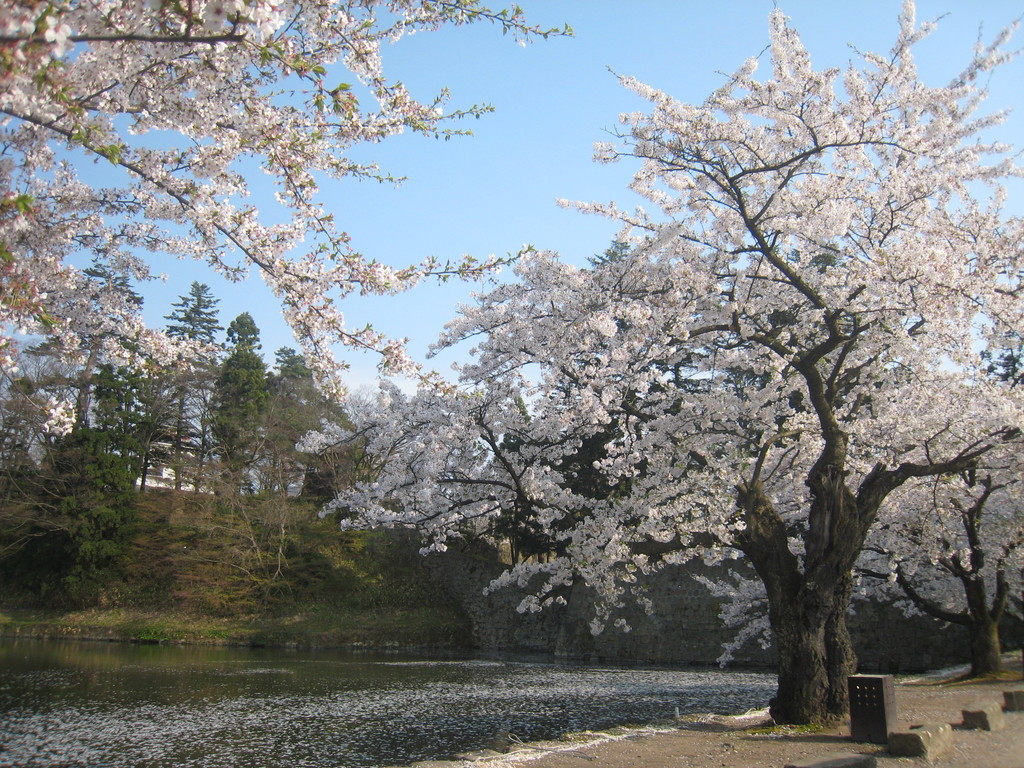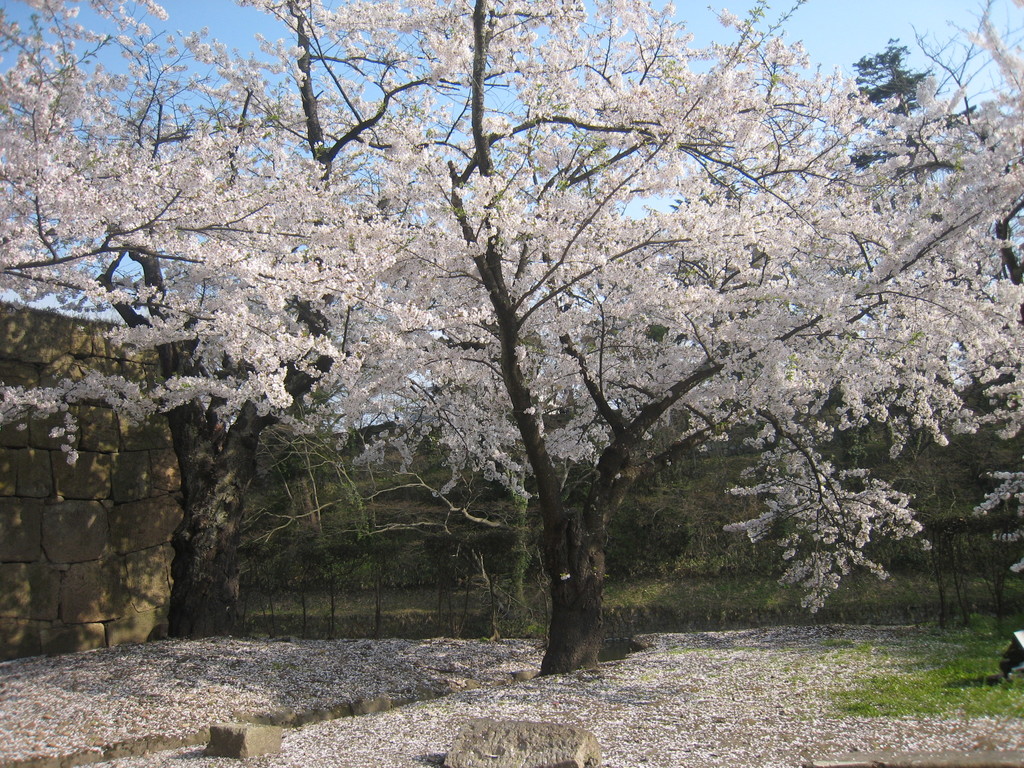Tsuruga Castle is the symbol of Aizu Wakamatsu City that was featured in the popular 2013 TV series “Yae no Cherry blossom”. The combination of a Japanese castle and cherry blossom trees is an incredibly beautiful and elegant sight, especially considering there are over 1000 cherry blossom trees around the castle! Seen from under a blooming tree, the castle towers appear to be afloat among pink clouds. The view of the flower petals being blown by the spring winds is fantastic, so a visit to Tsuruga during the cherry blossom season is highly recommended.
A castle amidst 1000 cherry blossom trees

Tsuruga Castle was once called home by several generations of Aizu’s feudal lords. Its magnificent tower rising into the sky earns it a spot on the list of Japan’s best 100 castles. In spring, over 1000 cherry blossom trees from several different species of tree like yoshino cherry and yamazakura (mountain cherry) blossom beautifully. These trees also earn it a place on the list of Japan’s 100 best cherry blossom viewing spots. When observed from the castle’s tower, the blossoming cherry blossom trees resemble a sea of clouds. The cherry blossom trees were planted around Tsuruga Castle in 1908 after a military base was established in Aizu Wakamatsu City. Up until then, the trees around the castle were mainly cedars, pines, and zelkova trees. So, contrary to popular image, the famous historical figures Byakkotai and Yae never saw any cherry blossom trees here, sadly. During the cherry blossom blooming period, the trees are lit up in the evening, and together with the stone walls and moat of the castle they create mystical and graceful atmosphere. This view is completely different from what you see during the day, so you can always find something to enjoy here no matter when you come.
Tsuruga Castle Illumination period: April 12 – May 6, 2013 Illumination time: From sunset till 9:30pm (until 8:30pm after the blossoming period ends) Castle tower: 8:30-5:00pm, no closing days Admission: 410 JPY Admission to the Rinkaku Teahouse: 200 JPY Combo ticket for the castle and teahouse: 500 JPY Note: entering the castle grounds outside of the tower and the teahouse is free anytime
Yae also viewed Tsuruga Castle in the last days of the Shogunate

During the siege of the Boshin War (a civil war between imperial and Tokugawa Shogunate forces; 1868-69), Tsuruga Castle wouldn’t fall no matter how forcefully the Imperial forces attacked, and thus the castle became famous for being impregnable. One who directly contributed to this reputation was Japan’s own Joan of Arc, Yae Niijima. Back during the days of the Boshin War, only the elderly, women, and children remained in the castle. One of these women was Yae, who was fortunately brought up in a family of artillery instructors. She fought back using canons and rifles, and defended it relentlessly for over a month. Yae was raised near Tsuruga and may well have looked up at the majestic castle tower many a time. In the spring of 2011, Tsuruga Castle was renovated to look like it did during the end of the Shogunate, in the days when Yae gazed upon it. Those of you who remember the castle from before might be surprised by the photo here, as indeed the roof tiles have been returned to their original reddish color. When the castle was constructed, the roof was originally made of black tiles from Kansai, but they cracked in the snow and the cold of winter. After trying various solutions, people found out that the tiles needed an iron glaze for protection, and the roof tiles were changed with red ones which contained iron. Back then there were several castles with red tiles in the cold parts of Japan, but these days it is only Tsuruga Castle.
A pleasant stroll among the blossoming cherry blossom trees

According to statistics from the past 20 years, the cherry blossom trees begin blossoming on around April 16 and reach their full peak on April 20. In my personal opinion, the days after the peak are the best. This is because the view of the cherry blossom petals being blown in the air by the spring wind is quite beautiful. Everything turns pink, including the waters of the moat and the footpaths. Having endured the cold winter, the blooming pink cherry blossom trees are always a crowd pleaser, a sight to see eve up until the very last day of their flowering.
Cherry blossom recovery

When the cherry blossom blooming season comes, many of us discover again how beautiful Japan is. The cherry blossom is a special flower for Japanese people. It is said that it represents the Japanese soul. Many regions damaged by the 2011 Tohoku earthquake are now using the popularity of their cherry blossom trees for recovery campaigns.
A new species of cherry blossom tree called Haruka was planted in Fukushima prefecture two years after the disaster. It will take about 10 years for the young tree to grow and blossom. The wish is that when its flowers appear, the people of Fukushima will be seeing better days.
Lastly
The annual number of travelers to Tohoku region is now larger than what it used to be before the disaster. Taking a trip to Tohoku might seem like a limited form of support, but it definitely at least cheers up the locals. It’s worth visiting Fukushima for their cherry blossoms, beautiful natural scenery, and rich history of stoic individuals.
History
Get Trip101 in your inbox
Unsubscribe in one click. See our Privacy Policy for more information on how we use your data















Create an account to